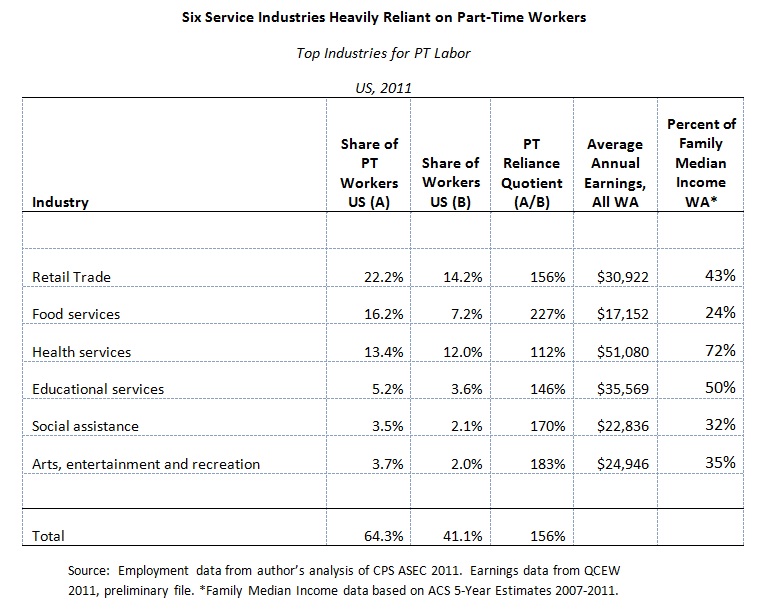Recent analysis of Washington’s Changing Workforce shows that service industry employers are heavily reliant on part-time (PT) workers in order to do business. The trend sheds some light into the proliferation of non-standard employment in Washington State which has reached its highest point in a decade. It also represents a growing concern over the quality of jobs in the State’s economy, given that an increasing share of workers in Washington work part-time involuntarily, because they cannot find full-time (FT) jobs.
Six industry sectors hold the largest shares of private sector PT employees and/or rely the most heavily on PT labor. In fact, nearly two thirds of all PT jobs are in these industry sectors. The table below calculates a “part-time reliance quotient.” This number is the industry’s share of private sector PT workers divided by its share of the total workforce at the US level. It also gives the average annual earnings for industry workers in Washington.
Retail, Food Services, and Health Services together account for nearly 52% of PT workers in the US. Educational Services, Social Assistance, and Arts/Entertainment/Recreation make up another 12.4%. Among the top three sectors, the PT reliance quotient is slightly above average in Health Services (112%), high in Retail Trade (156%), and extremely high in Food Services (227%). Rates of PT worker utilization vary within each of these sectors.
So why do service industry employers rely so heavily on part-time workers? They are overall less expensive to employ and their work hours are easy to cut. Some employers are executing a maneuver increasingly being referred to as the Walmart Effect. As the implementation of the Affordable Care Act approaches, some large corporate employers are dropping part-time workers from health insurance and shifting the cost for coverage onto the federally subsidized state health care exchange and state and federally funded Medicaid. See our post next week on the workers most likely to have their hours cut.
There is also increasing evidence that many service sector employers manipulate and fluctuate worker hours to offload the risk associated with fluctuating consumer demand. See our post tomorrow on scheduling in the grocery industry for more information.
For more information about part-time and contingent work in Washington State, read the full report online.

